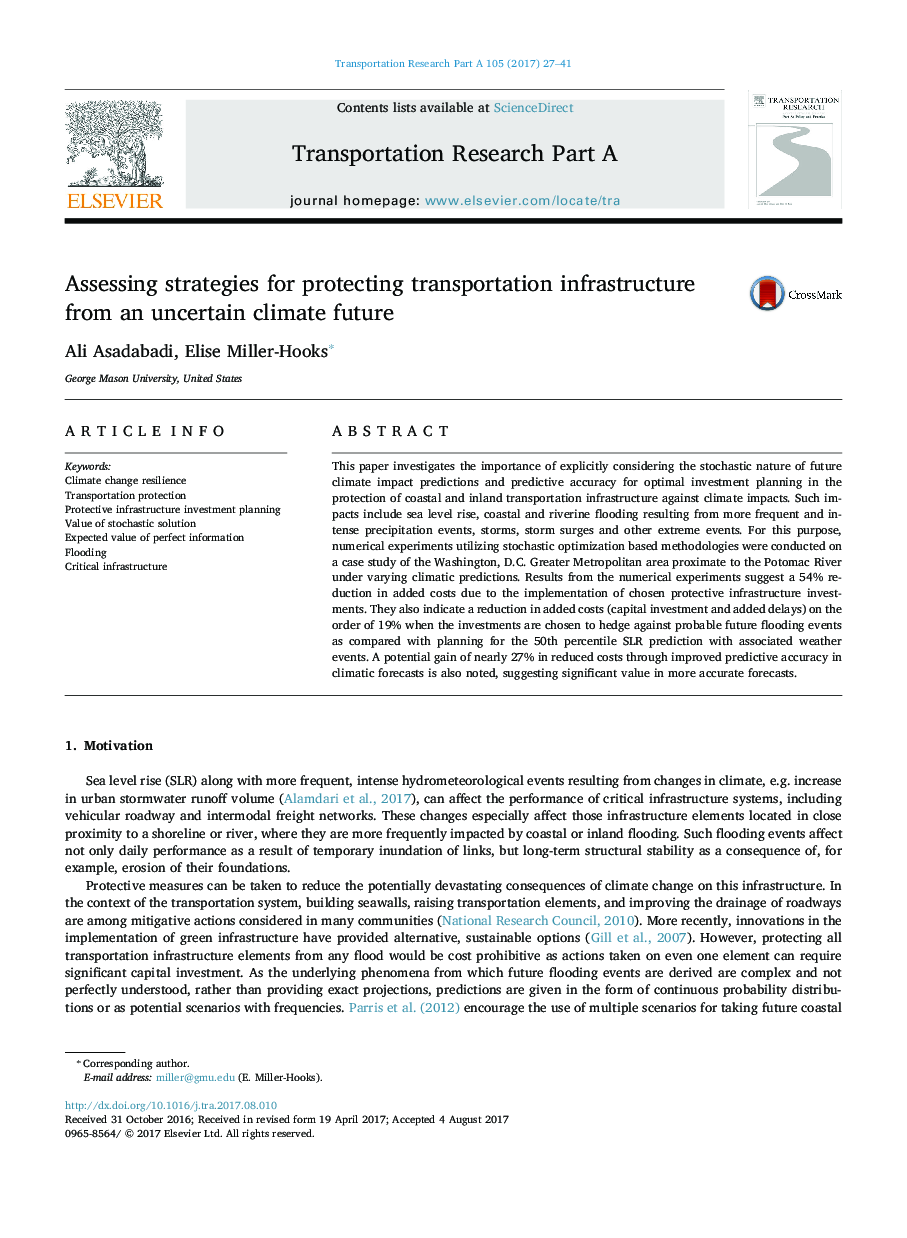| Article ID | Journal | Published Year | Pages | File Type |
|---|---|---|---|---|
| 4928846 | Transportation Research Part A: Policy and Practice | 2017 | 15 Pages |
Abstract
This paper investigates the importance of explicitly considering the stochastic nature of future climate impact predictions and predictive accuracy for optimal investment planning in the protection of coastal and inland transportation infrastructure against climate impacts. Such impacts include sea level rise, coastal and riverine flooding resulting from more frequent and intense precipitation events, storms, storm surges and other extreme events. For this purpose, numerical experiments utilizing stochastic optimization based methodologies were conducted on a case study of the Washington, D.C. Greater Metropolitan area proximate to the Potomac River under varying climatic predictions. Results from the numerical experiments suggest a 54% reduction in added costs due to the implementation of chosen protective infrastructure investments. They also indicate a reduction in added costs (capital investment and added delays) on the order of 19% when the investments are chosen to hedge against probable future flooding events as compared with planning for the 50th percentile SLR prediction with associated weather events. A potential gain of nearly 27% in reduced costs through improved predictive accuracy in climatic forecasts is also noted, suggesting significant value in more accurate forecasts.
Keywords
Related Topics
Physical Sciences and Engineering
Engineering
Civil and Structural Engineering
Authors
Ali Asadabadi, Elise Miller-Hooks,
